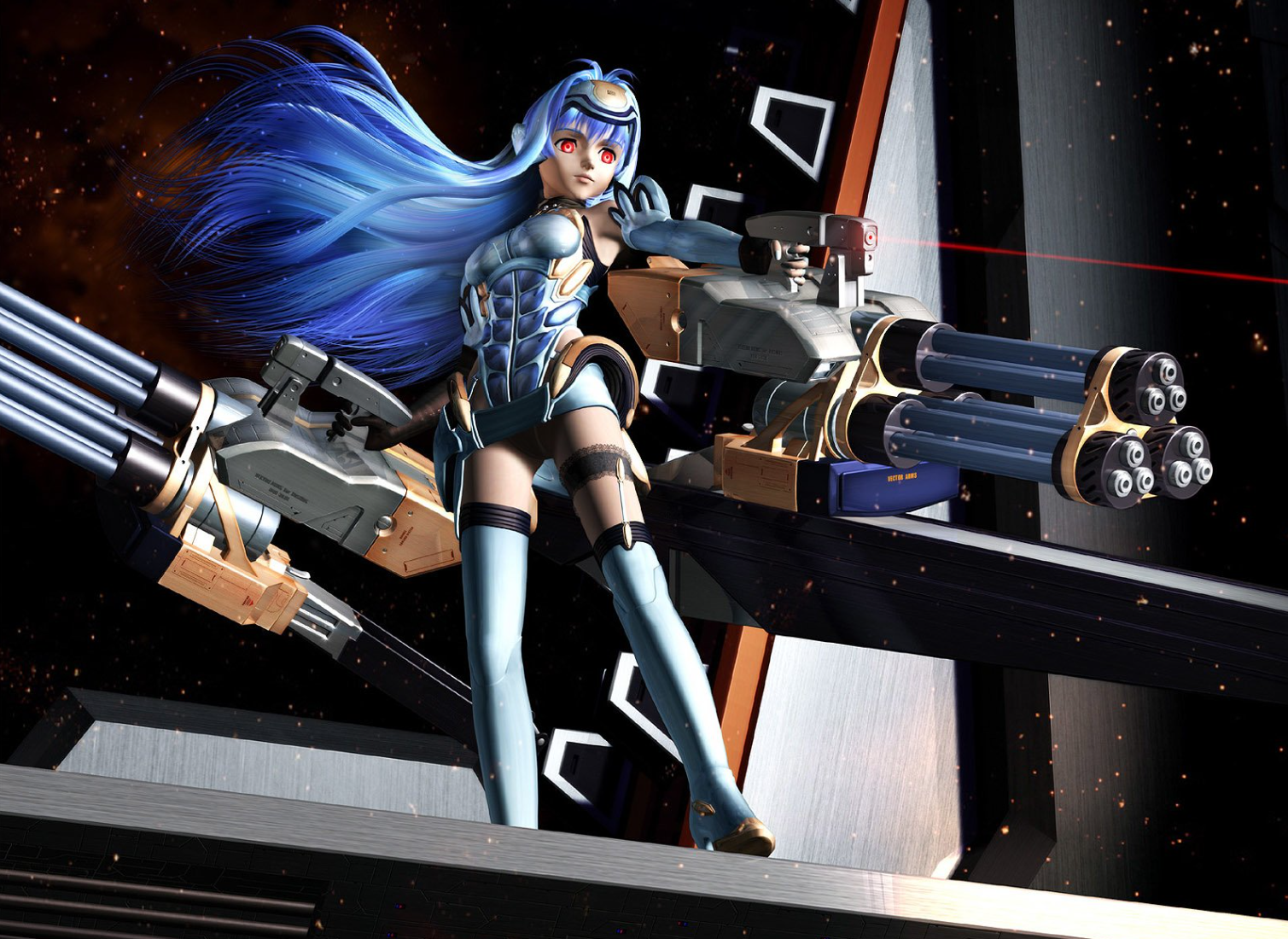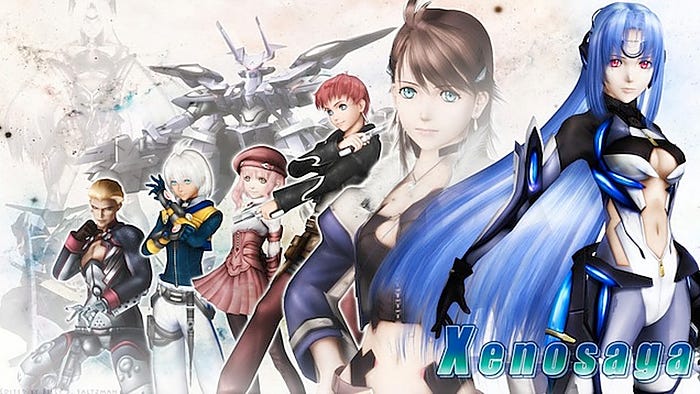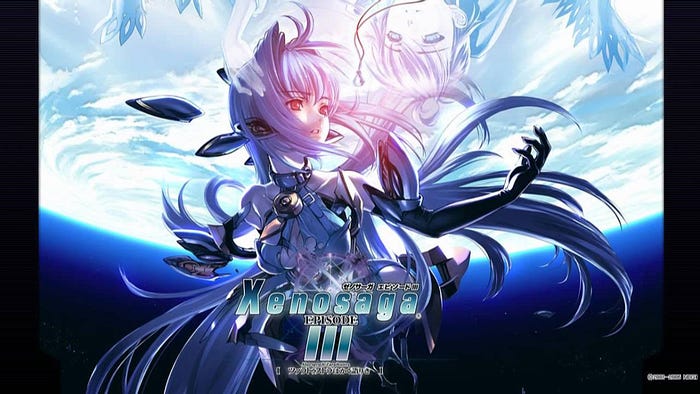The Xenosaga Trilogy Deserves a Remastered Edition
This could be the right time for the overlooked RPG to find an audience

“The future is overflowing with hope.”
In 2019, Katsuhiro Harada, a director/producer at Bandai Namco, dashed our hopes — he sent a tweet that felt like the final, definitive nail in the coffin of ever getting a Xenosaga remaster:
This actually progressed to the remaster’s plan, but failed in a profitable market analysis. Sorry guys, This plan will be difficult to resurface… [via Gamespot]
Citing that it would make no sense from a profitability standpoint, Harada confirmed that a Xenosaga HD remaster had been revisited as an idea, but failed during market analysis. The project would be difficult to accomplish and cost an amount that would not be worth it to the decision-makers at Bandai Namco.

The Struggle of the Niche RPG
Any fan of the Xenosaga trilogy is well aware of its initial rocky development and release. An ambitious six-part RPG saga directed by Tetsuya Takahashi (now infamous for the Xenoblade series), Xenosaga is a sprawling space opera of humans, aliens, robots, Christian mythology, Jungian psychology, and an absurdly dense storyline that crosses thousands of years and the entirety of the human condition. While Xenosaga does not enjoy the same fervent fanbase as Xenoblade, it remains beloved for the fans who desperately wish to see it released again in some form. As it stands, Xenosaga is still only available on the PlayStation 2, with one particular re-release on the Nintendo DS never making it outside of Japan.
The foundation of Monolith Soft was initially tasked with the idea of making a Xenogears 2, a game that never came to fruition. Instead, Xenosaga was developed as a spiritual prequel to Xenogears, penned by Takahashi to do things that the PlayStation game could not. Xenosaga would prove to be a foundationally different game from other RPGs at the time, and its titanic scope and ambitious story proved to be a bit too much for the nascent Monolith Soft.
A restructuring of the series’ course and funding after Xenosaga Episode 1: Der Wille zer Macht drastically changed the presentation of the sequel. Xenosaga Episode II: Jenseits von Gut und Böse was radically different from its sequel, and after the bombastic plot had to be condensed to handle the game’s new budget, series writer Soraya Saga left the project, which also affected the future of the third entry. Reactions to the new character designs, gameplay, and direction were mixed, and the future of the series was momentarily in peril.
Soraya Saga: “It’s so complicated. To fill the unexpected gap that was generated in the episode II, the subsequent plot had to shift its course to some extent from where it was supposed to be. There were many major changes, but what’s done cannot be undone, so there’s no looking back on those might-have-beens.” [via Siliconera]
Despite being developed during the second episode, Xenosaga Episode III: Also Sprach Zarathustra was designed to be the series’ finale, prematurely ending the six-episode arc. Despite narrative changes and cuts to the overall script, the third episode was well received and succeeded the second episode in almost every aspect.

The Legacy of Xenosaga
During its heyday, the Xenosaga trilogy enjoyed international success. Monolith Soft, when still owned by Namco, was viewed as a valuable development partner. More recently, Nintendo’s acquisition of Monolith and their releases of Xenoblade Chronicles 2 and Xenoblade Chronicles: Definitive Edition have cemented the developer as a prestigious and lucrative RPG studio. The Xenoblade series has sold millions of copies, and Monolith assisted in the development of The Legend of Zelda: Breath of the Wild. After their somewhat rocky start, they’ve now enjoyed nearly a decade of success and prestige, which has garnered further interest in both Xenosaga and Xenogears.
Any lifelong fan of the Xenosaga trilogy is more than willing to gush over what they love about the series. As with any piece of media that gains a passionate cult following, it’s not difficult for the fans to look past the faults of the game and see the true beauty of one of the most unique RPGs on the PlayStation 2, and arguably one of the most unique RPGs ever made. Within its trappings of psychology and religion, Xenosaga is an earnest trilogy filled with beautifully written characters, incredible music (composed by Yuki Kajiura and Yasunori Mitsuda), and a multilayered plot. What makes Xenosaga so unique is how it weaves its ideas of the Zohar, Eternal Recurrence, reality-shifting Gnosis, and Abrahamic mecha into a touching, ultimately humanist storyline.
While many of its mechanics and designs strictly belong to the RPG development philosophies of the early aughts, there is much to love in this trilogy whose entire three-game journey can be experienced at around 85 hours. The concept of a full remaster — while so recently shot down — doesn’t mean that Xenosaga should not be made accessible in some fashion. Like so many PlayStation 2 games that have been made available on the Playstation 4, a simple and direct release of the game trilogy on the PlayStation Network would be more than enough to appease desperate fans and allow people who were never able to experience this titanic trilogy a chance at these historic, niche games.

The Inaccessibility of Gaming
As with so many unfortunate but infamous video games that have fallen into the dusty annals of gaming history (for example, Eternal Darkness or the Shadow Hearts series), I believe that the companies who own these IPs have more at stake than the simple dollars and cents of commercial investment. The restoration and accessibility of cult games are important for the overall structure of the medium itself, and sales figures alone cannot account for the impact that many of these games have had on their passionate fans.
Xenosaga should be made accessible in some form for the same reason that we reprint novels or release decades-old films on Blu-Ray: art should not be allowed to be forgotten and rot away. Regardless of who owns the property — whether it be in the hands of Bandai Namco or Nintendo — there must be some worth in untouched ports of the original three titles on a modern console. Like most video games lost to time and made unavailable by region or price restrictions, Xenosaga more than deserves a second chance and a new, appreciative generation of fans. Singing the praise of this trilogy is easy, but only if you’ve been lucky enough to actually experience the games.
Currently, we are limited to just a few avenues by which to play forgotten titles. Recently I purchased a PS2 to HDMI adapter for around $30, found my PS2 slim (and cleaned it fairly thoroughly), dug my ancient copy of Xenosaga Episode 1 out of my big storage tub of PS2 games, and set forth playing. Sadly this route is not viable for many people — many gamers sell or otherwise get rid of their last-gen systems for various reasons, and a copy of Xenosaga can be expensive or difficult to access (they go for around $25 on Ebay). A used PlayStation 2 goes for around $100. If you’re buying a console, the game, the HDMI up-scaler and a memory card only to access a piece of history that you want to play, this could run you around the same price as simply getting a used Nintendo Switch or PlayStation 4. Video games should be made widely accessible, especially ones that are becoming more difficult to acquire in the widening gulf of years from their original release dates.

Emulation, as always, is possible — though, again, not for everyone. In order to run a PlayStation 2 emulator and a ROM of Xenosaga Episode 1 you need a semi-decent computer or laptop, and it will take a bit of fiddling, reading, and know-how to get the ROM to run efficiently. While this is much more accessible than buying everything you need to play the game on a PlayStation 2, this avenue can also be too complicated or too expensive for some. Again, what it comes down to is a frustrating mess that results in many people simply being unable to play the game and resorting to YouTube play-throughs or simply not playing the games at all.
I understand that companies such as Bandai Namco must consider the bottom line when it comes to investing in resources, and that includes revisiting games for re-releases and remasters. Still, I believe that it behooves these companies to invest in their history, their IPs, and most importantly their fans by making as many older games as widely accessible as possible. The Xenosaga trilogy is an incredible, once-in-a-lifetime RPG experience that deserves to have a much bigger fanbase than it does. Maybe in time if we continue to be vocal about the importance of preserving the legacy of inaccessible games, it will become more common for publishers to invest in their lost (but beloved) franchises and titles.
Tetsuya Takahashi: “Gamers are my number-one motivation and spiritual support; it’s thanks to them that I was able to build Monolith Soft, so at the very least I want to create something that won’t disappoint. Xenosaga is a very long story, so I don’t know how successful I’ve been in bringing it to life, but I’m hoping that gamers will be enjoying it for years to come.” [2001 development interview]
2019, Katsuhiro Harada, a director/producer at Bandai Namco, dashed our hopes — he sent a tweet that felt like the final, definitive nail in the coffin of ever getting a Xenosaga remaster:
This actually progressed to the remaster’s plan, but failed in a profitable market analysis. Sorry guys, This plan will be difficult to resurface… [via Gamespot]
Citing that it would make no sense from a profitability standpoint, Harada confirmed that a Xenosaga HD remaster had been revisited as an idea, but failed during market analysis. The project would be difficult to accomplish and cost an amount that would not be worth it to the decision-makers at Bandai Namco.

The Struggle of the Niche RPG
Any fan of the Xenosaga trilogy is well aware of its initial rocky development and release. An ambitious six-part RPG saga directed by Tetsuya Takahashi (now infamous for the Xenoblade series), Xenosaga is a sprawling space opera of humans, aliens, robots, Christian mythology, Jungian psychology, and an absurdly dense storyline that crosses thousands of years and the entirety of the human condition. While Xenosaga does not enjoy the same fervent fanbase as Xenoblade, it remains beloved for the fans who desperately wish to see it released again in some form. As it stands, Xenosaga is still only available on the PlayStation 2, with one particular re-release on the Nintendo DS never making it outside of Japan.
The foundation of Monolith Soft was initially tasked with the idea of making a Xenogears 2, a game that never came to fruition. Instead, Xenosaga was developed as a spiritual prequel to Xenogears, penned by Takahashi to do things that the PlayStation game could not. Xenosaga would prove to be a foundationally different game from other RPGs at the time, and its titanic scope and ambitious story proved to be a bit too much for the nascent Monolith Soft.
A restructuring of the series’ course and funding after Xenosaga Episode 1: Der Wille zer Macht drastically changed the presentation of the sequel. Xenosaga Episode II: Jenseits von Gut und Böse was radically different from its sequel, and after the bombastic plot had to be condensed to handle the game’s new budget, series writer Soraya Saga left the project, which also affected the future of the third entry. Reactions to the new character designs, gameplay, and direction were mixed, and the future of the series was momentarily in peril.
Soraya Saga: “It’s so complicated. To fill the unexpected gap that was generated in the episode II, the subsequent plot had to shift its course to some extent from where it was supposed to be. There were many major changes, but what’s done cannot be undone, so there’s no looking back on those might-have-beens.” [via Siliconera]
Despite being developed during the second episode, Xenosaga Episode III: Also Sprach Zarathustra was designed to be the series’ finale, prematurely ending the six-episode arc. Despite narrative changes and cuts to the overall script, the third episode was well received and succeeded the second episode in almost every aspect.

The Legacy of Xenosaga
During its heyday, the Xenosaga trilogy enjoyed international success. Monolith Soft, when still owned by Namco, was viewed as a valuable development partner. More recently, Nintendo’s acquisition of Monolith and their releases of Xenoblade Chronicles 2 and Xenoblade Chronicles: Definitive Edition have cemented the developer as a prestigious and lucrative RPG studio. The Xenoblade series has sold millions of copies, and Monolith assisted in the development of The Legend of Zelda: Breath of the Wild. After their somewhat rocky start, they’ve now enjoyed nearly a decade of success and prestige, which has garnered further interest in both Xenosaga and Xenogears.
Any lifelong fan of the Xenosaga trilogy is more than willing to gush over what they love about the series. As with any piece of media that gains a passionate cult following, it’s not difficult for the fans to look past the faults of the game and see the true beauty of one of the most unique RPGs on the PlayStation 2, and arguably one of the most unique RPGs ever made. Within its trappings of psychology and religion, Xenosaga is an earnest trilogy filled with beautifully written characters, incredible music (composed by Yuki Kajiura and Yasunori Mitsuda), and a multilayered plot. What makes Xenosaga so unique is how it weaves its ideas of the Zohar, Eternal Recurrence, reality-shifting Gnosis, and Abrahamic mecha into a touching, ultimately humanist storyline.
While many of its mechanics and designs strictly belong to the RPG development philosophies of the early aughts, there is much to love in this trilogy whose entire three-game journey can be experienced at around 85 hours. The concept of a full remaster — while so recently shot down — doesn’t mean that Xenosaga should not be made accessible in some fashion. Like so many PlayStation 2 games that have been made available on the Playstation 4, a simple and direct release of the game trilogy on the PlayStation Network would be more than enough to appease desperate fans and allow people who were never able to experience this titanic trilogy a chance at these historic, niche games.

The Inaccessibility of Gaming
As with so many unfortunate but infamous video games that have fallen into the dusty annals of gaming history (for example, Eternal Darkness or the Shadow Hearts series), I believe that the companies who own these IPs have more at stake than the simple dollars and cents of commercial investment. The restoration and accessibility of cult games are important for the overall structure of the medium itself, and sales figures alone cannot account for the impact that many of these games have had on their passionate fans.
Xenosaga should be made accessible in some form for the same reason that we reprint novels or release decades-old films on Blu-Ray: art should not be allowed to be forgotten and rot away. Regardless of who owns the property — whether it be in the hands of Bandai Namco or Nintendo — there must be some worth in untouched ports of the original three titles on a modern console. Like most video games lost to time and made unavailable by region or price restrictions, Xenosaga more than deserves a second chance and a new, appreciative generation of fans. Singing the praise of this trilogy is easy, but only if you’ve been lucky enough to actually experience the games.
Currently, we are limited to just a few avenues by which to play forgotten titles. Recently I purchased a PS2 to HDMI adapter for around $30, found my PS2 slim (and cleaned it fairly thoroughly), dug my ancient copy of Xenosaga Episode 1 out of my big storage tub of PS2 games, and set forth playing. Sadly this route is not viable for many people — many gamers sell or otherwise get rid of their last-gen systems for various reasons, and a copy of Xenosaga can be expensive or difficult to access (they go for around $25 on Ebay). A used PlayStation 2 goes for around $100. If you’re buying a console, the game, the HDMI up-scaler and a memory card only to access a piece of history that you want to play, this could run you around the same price as simply getting a used Nintendo Switch or PlayStation 4. Video games should be made widely accessible, especially ones that are becoming more difficult to acquire in the widening gulf of years from their original release dates.

Emulation, as always, is possible — though, again, not for everyone. In order to run a PlayStation 2 emulator and a ROM of Xenosaga Episode 1 you need a semi-decent computer or laptop, and it will take a bit of fiddling, reading, and know-how to get the ROM to run efficiently. While this is much more accessible than buying everything you need to play the game on a PlayStation 2, this avenue can also be too complicated or too expensive for some. Again, what it comes down to is a frustrating mess that results in many people simply being unable to play the game and resorting to YouTube play-throughs or simply not playing the games at all.
I understand that companies such as Bandai Namco must consider the bottom line when it comes to investing in resources, and that includes revisiting games for re-releases and remasters. Still, I believe that it behooves these companies to invest in their history, their IPs, and most importantly their fans by making as many older games as widely accessible as possible. The Xenosaga trilogy is an incredible, once-in-a-lifetime RPG experience that deserves to have a much bigger fanbase than it does. Maybe in time if we continue to be vocal about the importance of preserving the legacy of inaccessible games, it will become more common for publishers to invest in their lost (but beloved) franchises and titles.
Tetsuya Takahashi: “Gamers are my number-one motivation and spiritual support; it’s thanks to them that I was able to build Monolith Soft, so at the very least I want to create something that won’t disappoint. Xenosaga is a very long story, so I don’t know how successful I’ve been in bringing it to life, but I’m hoping that gamers will be enjoying it for years to come.” [2001 development interview]
